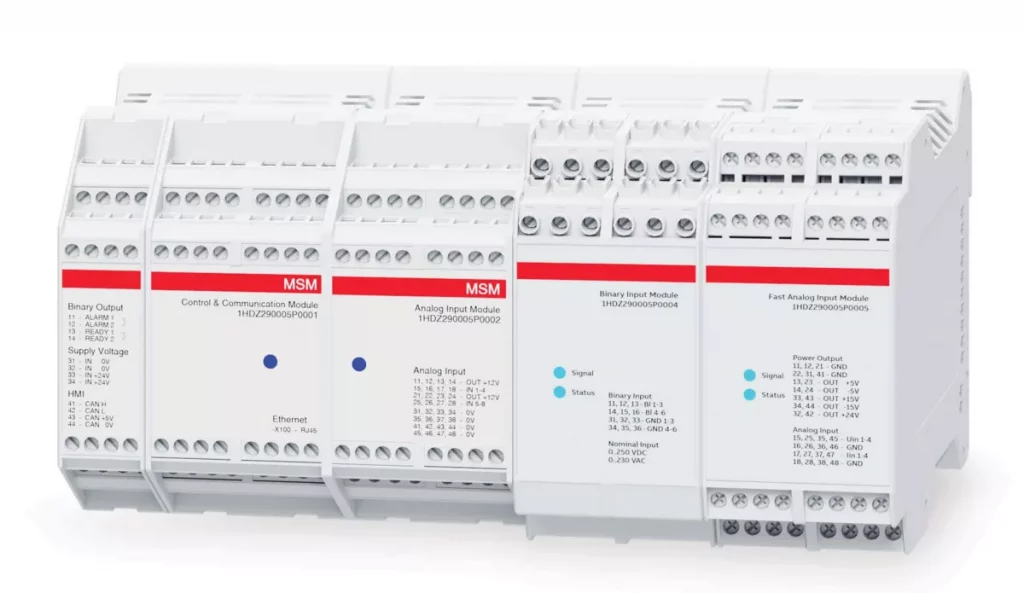1. EXECUTIVE SUMMARY
- CVSS v3 5.0
- ATTENTION: Exploitable remotely
- Vendor: Hitachi Energy
- Equipment: Modular Switchgear Monitoring (MSM)
- Vulnerabilities: Cross-Site Request Forgery (CSRF), HTTP Response Splitting
2. RISK EVALUATION
Successful exploitation of these vulnerabilities could allow an attacker to perform malicious command injection, trick a valid user into downloading malicious software onto their computer. Successful exploitation may also allow an attacker to pose as a legitimate user.
3. TECHNICAL DETAILS
3.1 AFFECTED PRODUCTS
The following versions of MSM, a monitoring system for high voltage switchgear, are affected:
- MSM version 2.2 and prior
3.2 VULNERABILITY OVERVIEW
3.2.1 CROSS-SITE REQUEST FORGERY CWE-352
The affected product is vulnerable to cross site request forgery (CSRF), which if exploited could lead an attacker to gain unauthorized access to the web application and perform an unauthorized action without the knowledge of the legitimate user.
CVE-2021-40335 has been assigned to this vulnerability. A CVSS v3 base score of 5.0 has been calculated; the CVSS vector string is (AV:N/AC:H/PR:N/UI:R/S:U/C:L/I:L/A:L).
3.2.2 IMPROPER NEUTRALIZATION OF CRLF SEQUENCES IN HTTP HEADERS (‘HTTP REQUEST/RESPONSE SPLITTING’) CWE-113
The affected product is vulnerable to HTTP response splitting, which if exploited, could lead an attacker to inject harmful code into the user’s web browser for purposes such as stealing session cookies.
CVE-2021-40336 has been assigned to this vulnerability. A CVSS v3 base score of 5.0 has been calculated; the CVSS vector string is (AV:N/AC:H/PR:N/UI:R/S:U/C:L/I:L/A:L).
3.3 BACKGROUND
- CRITICAL INFRASTRUCTURE SECTORS: Energy
- COUNTRIES/AREAS DEPLOYED: Worldwide
- COMPANY HEADQUARTERS LOCATION: Switzerland
3.4 RESEARCHER
Hitachi Energy reported these vulnerabilities to CISA.
4. MITIGATIONS
Hitachi Energy recommends security practices and firewall configurations to help protect a network from attacks originating outside the network:
- Physically protect process control systems from unauthorized direct access.
- Ensure process control systems have no direct connections to the internet.
- Use firewall systems to separate process control systems from other networks.
- Ensure the firewall system only has necessary ports exposed.
MSM should only be used to access the internet for authorized information. Portable computers and removable storage media should be carefully scanned for viruses before connecting to a network.
Links used for access to an MSM system should not be sent by email; links to MSM should not be opened. Suspicious emails should be reported to the IT administrator.
For more information, see Hitachi Energy advisory 8DBD000T085.
CISA recommends users take defensive measures to minimize the risk of exploitation of this vulnerability these vulnerabilities. Specifically, users should:
- When remote access is required, use secure methods, such as Virtual Private Networks (VPNs), recognizing VPNs may have vulnerabilities and should be updated to the most current version available. Also recognize VPN is only as secure as its connected devices.
CISA reminds organizations to perform proper impact analysis and risk assessment prior to deploying defensive measures.
CISA also provides a section for control systems security recommended practices on the ICS webpage at cisa.gov/ics. Several CISA products detailing cyber defense best practices are available for reading and download, including Improving Industrial Control Systems Cybersecurity with Defense-in-Depth Strategies.
Additional mitigation guidance and recommended practices are publicly available on the ICS webpage at cisa.gov/ics in the technical information paper, ICS-TIP-12-146-01B–Targeted Cyber Intrusion Detection and Mitigation Strategies.
Organizations observing suspected malicious activity should follow established internal procedures and report findings to CISA for tracking and correlation against other incidents.
CISA also recommends users take the following measures to protect themselves from social engineering attacks:
- Do not click web links or open attachments in unsolicited email messages.
- Refer to Recognizing and Avoiding Email Scams for more information on avoiding email scams.
- Refer to Avoiding Social Engineering and Phishing Attacks for more information on social engineering attacks.
Source:
https://www.cisa.gov/uscert/ics/advisories/icsa-22-277-02
